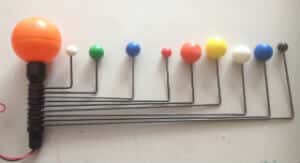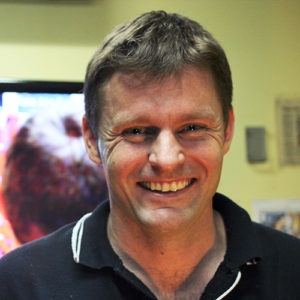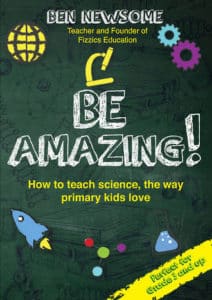This might be counter-intuitive but sometimes presenting poorly designed scientific models to students can be extremely helpful in allowing students to critically analyse a given topic area. This week I was teaching a Stars & Planets workshop to primary school students and we started tearing apart the solar system model shown below:

Solar system model: basically it’s terrible…and useful!
Of course, as you’d expect of a school science incursion we bring all the ‘whiz-bang stuff’ to show the students but for this hands-on station it is very useful to use the solar system pictured above as a way of having students brainstorm all things wrong about the model… and believe me, there are a LOT of issues:
- The size ratios of the Sun compared to planets are completely out.
- The distances between each planet and to the Sun are totally wrong.
- Where are the moons? For that matter, what about the asteroid belt, the Kuiper belt or the Oort cloud?
- The Sun is missing sunspots, solar flares and is even the wrong colour (it’s a yellow dwarf after all).
- Mercury is completely smooth instead of pockmarked with craters.
- Venus should be white-ish yellow reflecting the presence of a carbon dioxide atmosphere laden with sulfur.
- Earth has no continents, tundra, weather systems or polar caps.
- Mars is missing it’s northern polar ice cap.
- Jupiter has no gaseous banding or rotating storms shown (nor does any of the other gas giants either).
- Saturn is missing its icy rings, and that’s the same with Jupiter, Uranus and Neptune.
- If we were only showing planets and our Sun, why is Pluto there if it’s classified as a Dwarf Planet?
- The orbits paths are completely circular instead of elliptical…
… and the list goes on!
Now, of course, you could call this being picky (it is, in reality, a $30 model), but that is actually the point – if students can critically analyse how bad a scientific model is, it means that they really do know their content and can demonstrate scientific literacy. In the case of the school science visit, we spent 45 minutes going to town on how bad the model was and I must say I had to stop them as we only were at the school for half a day and had other things to do too! The aftermath of the intense 45 minutes of student interrogation was 2 whiteboards completely filled with highly informative facts and figures about what should be included in an ideal model of the solar system… and the booking teacher could not have been happier. In a short space of time, the kids had been taught to question what is presented to them, form their own opinion, research the facts and collectively contribute to a better model that they would prefer… thereby emulating thought processes used in the development of new ideas as well as undertaking teamwork around a common goal.
What’s the moral to this story? Even if you can’t get the exact scientific model to use in demonstrating a concept it is the very flaws you can find that can be used as the greatest source for inspired learning.
All the best!
Explore space further with the Fizzics team!

NEW Primary science teaching book!
“Be Amazing! How to teach science, the way primary kids love”



























Comments